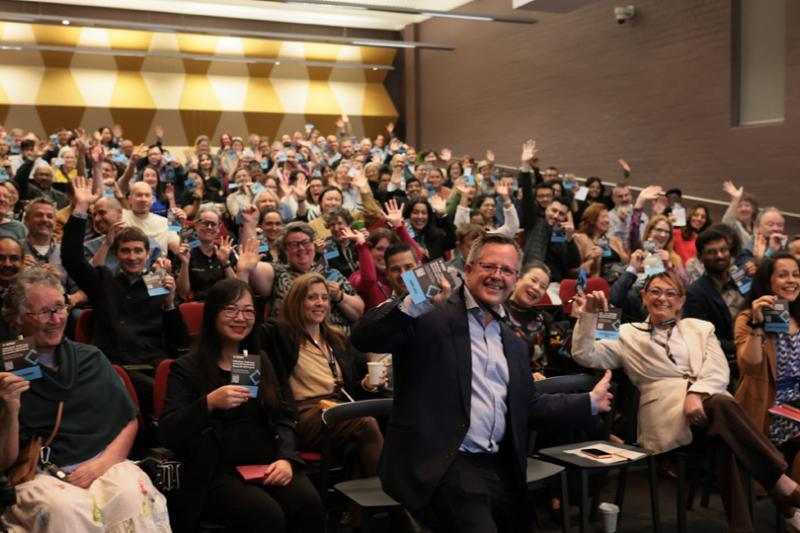The Australian newspaper says block model ‘a winner’

As 2019 classes get under way, Victoria University’s new way of doing uni has been called “a winner” by Australia’s national newspaper, The Australian.
In the newspaper’s 27 February edition, Higher Education Editor Tim Dodd says ‘it is hard to overestimate the significance’ of VU introducing its Australian-first block model of teaching last year, extending it to second year courses in 2019, and to all VU levels, including postgraduate studies in 2020.
“It is creating something genuinely new which is squarely aimed at the needs of students,” The Australian says.
“It’s a landmark time at Victoria University,” it says. “Last year when block mode was introduced to first-year classes, it proved a resounding success. Fewer students dropped out, grades went up and pass rates improved.”
“Importantly, the biggest percentage point gain in pass rates went to students from a poor background, and Victoria University has many of those.”
The article outlines how the block model is also creating a cultural change at VU as the University negotiates a new Enterprise Agreement (EA) with its staff.
VU Vice-Chancellor Professor Peter Dawkins told The Australian that a new EA is designed to build a fair and equitable workforce.
Rather than having a “two-class system of teaching,” the EA “builds in the block model as a central concept” so educators have an equal workload, Professor Dawkins told The Australian.
“It doesn’t privilege one group of teaching staff with a lighter load than another group,” he says.
Evidence the block model is working
Using equivalent standards and in some cases, identical assessment items, data about student success and the Block Model for 2018 compared to 2017 (pre-Block Model) show:
- Overall pass rates for Block Model students are up 7.9 percentage points to 83.9%
- Students receiving distinctions jumped 6.8 points to 26.7%, while high distinctions jumped 6.6 points to 22.2%
- Pass rates for low socio-economic status (SES) students are up 15.3 points to 81.9%, with high distinctions for this group up by 8.6 points to 18.7%
- Pass rates for Indigenous and Torres Strait Islander students are up 19 points to 79%, while high distinctions for this group are up 11.9 points to 23.3%
- Pass rates for students from a Non English Speaking Background (NESB) are up 14.7 points to 82.1%, while high distinctions for this group are up 6.8 points to 15.6%
- Student load dropped only 3.7% throughout 2018, compared to 10.7% in 2017, indicating a strong improvement in student retention.
This data proves the Block Model works and is important in VU's financial turnaround this year.



